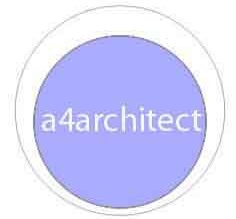Environmental Impact Assessment (EIA) examines the effects of a project on the environment. An EIA identifies both negative and positive impacts of any development activity or project, how it affects people, their property and the environment. EIA also identifies measures to mitigate the negative impacts, while maximizing on the positive ones. EIA is basically a preventive process. It seeks to minimize adverse impacts on the environment and reduces risks. If a proper EIA is carried out, then the safety of the environment can be properly managed at all stages of a project- planning, design, construction, operation, monitoring and evaluation as well as decommissioning.
Why is it Important to do an Environmental Impact Assessment.
The goal of an EIA is to ensure that decisions on proposed projects and activities are environmentally sustainable.
EIA is conducted in order to: –
a) Identify impacts of a project on the environment
b) Predict likely changes on the environment as a result of the development
c) Evaluate the impacts of the various alternatives on the project
d) Propose mitigation measures for the significant negative impacts of the project on the environment.
e) Generate baseline data for monitoring and evaluating impacts, including mitigation measures during the project cycle.
f) Highlight environment issues with a view to guiding policy makers, planners, stakeholders and government agencies to make environmentally and economically sustainable decisions.
WHICH PROJECTS REQUIRE EIA?
The projects to be subjected to EIA are specified in the Second Schedule of EMCA 1999, and include:
1. General: –
a) any activity out of character with its surrounding;
b) any structure of a scale not in keeping with its surrounding;
c) major changes in land use.
2. Urban Development including:-
a) designation of new townships;
b) establishment of industrial estates;
c) establishment or expansion of recreational areas;
d) establishment or expansion of recreational townships in mountain areas, national parks and game reserves;
e) shopping centres and complexes.
3. Transportation including –
a) all major roads;
b) all roads in scenic, wooded or mountainous areas and wetlands;
c) railway lines;
d) airports and airfields;
e) oil and gas pipelines;
f) water transport.
4. Dams, rivers and water resources including –
a) storage dams, barrages and piers;
b) river diversions and water transfer between catchments;
c) flood control schemes;
d) drilling for the purpose of utilising ground water resources including geothermal energy.
5. Aerial spraying.
6. Mining, including quarrying and open-cast extraction of –
a) precious metals;
b) gemstones;
c) metalliferous ores;
d) coal;
e) phosphates;
f) limestone and dolomite;
g) stone and slate;
h) aggregates, sand and gravel;
i) clay;
j) exploitation for the production of petroleum in any form;
k) extracting alluvial gold with use of mercury.
7. Forestry related activities including –
a) timber harvesting;
b) clearance of forest areas;
c) reforestation and afforestation.
8. Agriculture including –
a) large-scale agriculture;
b) use of pesticide;
c) introduction of new crops and animals;
d) use of fertilizers;
e) irrigation.
9. Processing and manufacturing industries including:-
a) mineral processing, reduction of ores and minerals;
b) smelting and refining of ores and minerals;
c) foundries;
d) brick and earthware manufacture;
e) cement works and lime processing;
f) glass works;
g) fertilizer manufacture or processing;
h) explosive plants;
i) oil refineries and petro-chemical works;
j) tanning and dressing of hides and skins;
k) abattoirs and meat-processing plants;
l) chemical works and process plants;
m) brewing and malting;
n) bulk grain processing plants;
o) fish-processing plants;
p) pulp and paper mills;
q) food-processing plants
r) plants for the manufacture or assembly of motor vehicles;
s) plants for the construction or repair of aircraft or railway equipment;
t) plants for the manufacture of tanks, reservoirs and sheet-metal containers;
u) plants for the manufacture of coal briquettes;
v) plant for manufacturing batteries;
10. Elect rical infrastructure including –
a) electricity generation stations;
b) electrical transmission lines;
c) electrical sub-stations;
d) pumped-storage schemes.
11. Management of hydrocarbons including:-
the storage of natural gas and combustible or explosive fuels.
12. Waste disposal including –
a) sites for hazardous waste disposal;
b) sewage disposal works;
c) works involving major atmospheric emissions;
d) works emitting offensive odours;
e) sites for solid waste disposal.
13. Natural conservation areas including –
a) creation of national parks, game reserves and buffer zones;
b) establishment of wilderness areas;
c) formulation or modification of forest management policies;
d) formulation or modification of water catchment management policies;
e) policies for the management of ecosystems, especially by use of fire;
f) commercial exploitation of natural fauna and flora;
g) introduction of alien species of fauna and flora into ecosystems.
14. Nuclear Reactors.
15. Major developments in biotechnology including the introduction and testing of genetically modified organisms.
WHEN SHOULD AN EIA BE DONE?
EIA is part of the project development process and is usually done at the initial stages of the project development. It is a decision making tool and should guide whether a project should be implemented, abandoned or modified prior to implementation.
Mercy Wangui
For NEMA Licence call
0715827209


Leave a Reply